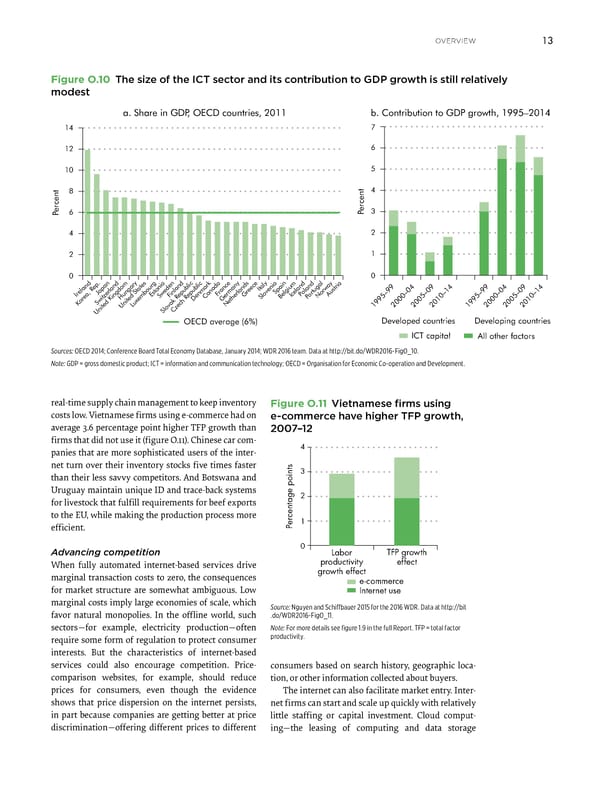overview 13 Figure O.10 The size of the ICT sector and its contribution to GDP growth is still relatively modest a. Share in GDP, OECD countries, 2011 b. Contribution to GDP growth, 1995–2014 14 7 12 6 10 5 8 4 ercent 6 ercent3 P P 4 2 2 1 0 0 d . n d y g a n d c k a e y s e y a n d d l y a p r i i r l i i m a i n e a n u n e n l a d c d ec a n a u g a r a R p a o d a b a n an It e i an an u w l a rl o t e l u m n a an e v p g l l t r e , J b s n p public r m l r S l e o r o r e w i n a F r r o e c P Aust I a z m E S F e e e e e G l I o N e it Hungar R R C h S B P r e D G t o Sw x k h e K u a c N L v e 2005–092010–14 1995–992000–042005–092010–14 United States o z 1995–992000–04 United Kingdom Sl C OECD average (6%) Developed countries Developing countries ICT capital All other factors Sources: OECD 2014; Conference Board Total Economy Database, January 2014; WDR 2016 team. Data at http://bit.do/WDR2016-FigO_10. Note: GDP = gross domestic product; ICT = information and communication technology; OECD = Organisation for Economic Co-operation and Development. real-time supply chain management to keep inventory Figure O.11 Vietnamese firms using costs low. Vietnamese firms using e-commerce had on e-commerce have higher TFP growth, average 3.6 percentage point higher TFP growth than 2007–12 firms that did not use it (figure O.11). Chinese car com- 4 panies that are more sophisticated users of the inter- net turn over their inventory stocks five times faster s t 3 n than their less savvy competitors. And Botswana and i o p Uruguay maintain unique ID and trace-back systems e 2 for livestock that fulfill requirements for beef exports tag n to the EU, while making the production process more ce r 1 e efficient. P Advancing competition 0 Labor TFP growth When fully automated internet-based services drive productivity effect marginal transaction costs to zero, the consequences growth effect for market structure are somewhat ambiguous. Low e-commerce Internet use marginal costs imply large economies of scale, which Source: Nguyen and Schiffbauer 2015 for the 2016 WDR. Data at http://bit favor natural monopolies. In the offline world, such .do/WDR2016-FigO_11. sectors—for example, electricity production—often Note: For more details see figure 1.9 in the full Report. TFP = total factor require some form of regulation to protect consumer productivity. interests. But the characteristics of internet-based services could also encourage competition. Price- consumers based on search history, geographic loca- comparison websites, for example, should reduce tion, or other information collected about buyers. prices for consumers, even though the evidence The internet can also facilitate market entry. Inter- shows that price dispersion on the internet persists, net firms can start and scale up quickly with relatively in part because companies are getting better at price little staffing or capital investment. Cloud comput- discrimination—offering different prices to different ing—the leasing of computing and data storage
 World Development Report 2016 Page 25 Page 27
World Development Report 2016 Page 25 Page 27